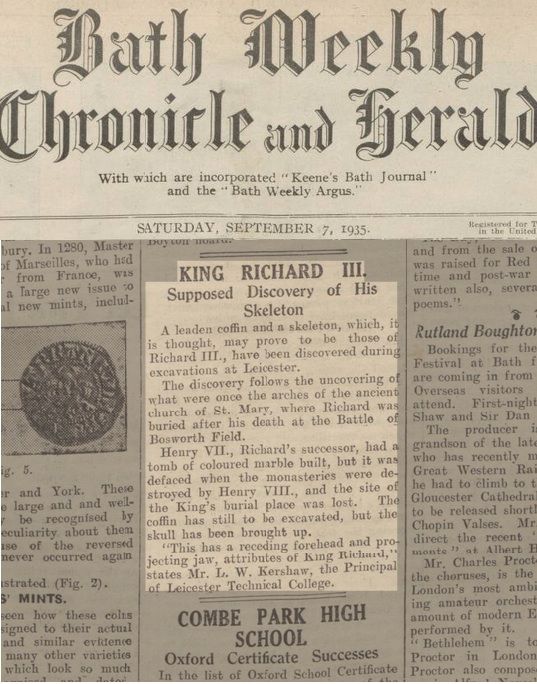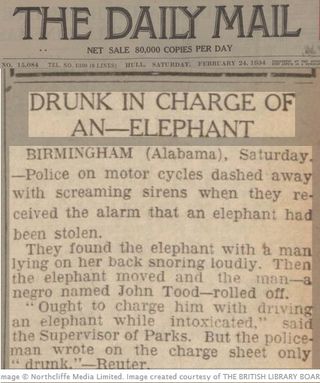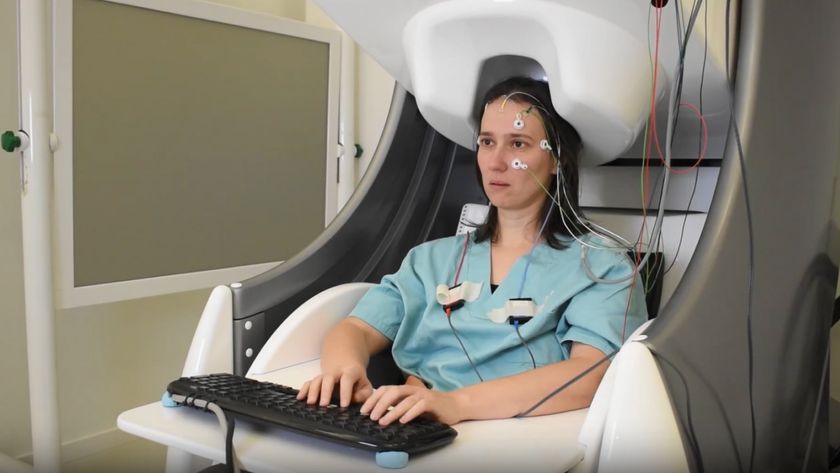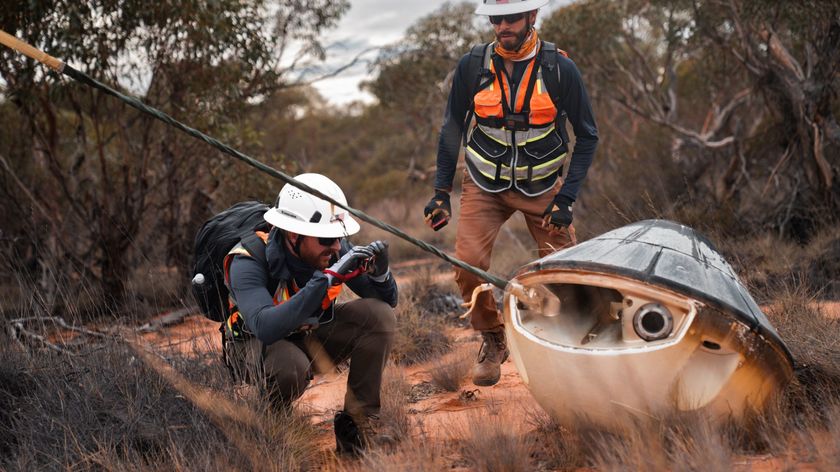Richard III 'Discovery' Reported in 1935

A September 1935 article heralding the potential discovery of the bones of King Richard III is among the haul of newspaper articles newly digitized by a genealogy website.
The project, collaboration between findmypast.com and the British Library, is an effort to scan 50 million pages of newsprint from more than 200 years of history. Of course, history has proven the Richard III article mistaken — the likely discovery of the king's real bones was just announced Feb. 4 in Leicester, England — but the find illustrates the long history of fascination with the dead monarch, who ruled for only two years.
"We look at something that happened 100 years ago, and it can be happening today — of course a different version of it," said Joshua Taylor, the lead geneaologist at findmypast.com.
The false Richard
The Richard III article appears in the Sept. 7, 1935, issue of the Bath Weekly Chronicle and Herald. It reports the discovery of a leaden coffin and skeleton at the ruins of the church of St. Mary in Leicester. [See Images of the Historical Articles]
"This has a receding forehead and projecting jaw, attributes of King Richard," the article quotes Mr. L.W. Kershaw, the principal of Leicester Technical College.
The skeleton, however, would prove not to belong to the king, who died in battle in 1485. University of Leicester researchers, using modern bone and DNA analysis, announced recently that a skeleton unearthed in late 2012 beneath a Leicester parking lot is almost certainly Richard III's. The skeleton has scoliosis and battle wounds matching historical accounts of the king, and DNA analysis links the bones to two living descendents of Richard III.
Sign up for the Live Science daily newsletter now
Get the world’s most fascinating discoveries delivered straight to your inbox.
The Richard III article is just one of many historical oddities rediscovered during the digitization process, Taylor told LiveScience. The team is about two years into a 10-year project and has already converted 65 million articles into digital format, working at a rate of 8,000 pages of newsprint per day. Huge scanners are used to capture digital images of the delicate old newspapers, Taylor said.
Weird history

Among the amusing headlines of yesteryear was one 1934 Daily Mail shocker, "Drunk In Charge Of An — Elephant." Datelined Birmingham, Ala., the news brief describes an alleged elephant theft. The purloined pachyderm was discovered with the alleged thief drunk and passed out on her back.
Another Daily Mail article, this one dating to 1924, tells a suspiciously too-good-to-be-true tale of mathematician Albert Einstein arguing with a Berlin tramcar conductor over correct change and being proved wrong.
The newspapers also reveal more substantial history, such as the spread of influenza epidemics, Taylor said. As the flu reached communities, articles, death notices and ads hawking cures sprung up in local papers.
"You can trace the epidemics as they come into the town," Taylor said. "You trace people passing away and how it's being spread and how doctors are treating it."
The newspapers are searchable by keyword at findmypast.com, though a subscription or one-time fee is needed to see complete scans.
Follow Stephanie Pappas on Twitter @sipappas or LiveScience @livescience. We're also on Facebook & Google+.

Stephanie Pappas is a contributing writer for Live Science, covering topics ranging from geoscience to archaeology to the human brain and behavior. She was previously a senior writer for Live Science but is now a freelancer based in Denver, Colorado, and regularly contributes to Scientific American and The Monitor, the monthly magazine of the American Psychological Association. Stephanie received a bachelor's degree in psychology from the University of South Carolina and a graduate certificate in science communication from the University of California, Santa Cruz.











